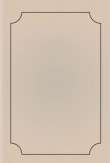You are here
قراءة كتاب Medicine in Virginia, 1607-1699
تنويه: تعرض هنا نبذة من اول ١٠ صفحات فقط من الكتاب الالكتروني، لقراءة الكتاب كاملا اضغط على الزر “اشتر الآن"
MEDICINE IN VIRGINIA, 1607-1699
By
Thomas P. Hughes
Assistant Professor of History, Washington and Lee University
Virginia 350th Anniversary Celebration Corporation
Williamsburg, Virginia
1957
COPYRIGHT©, 1957 BY
VIRGINIA 350TH ANNIVERSARY CELEBRATION
CORPORATION, WILLIAMSBURG, VIRGINIA
Second Printing, 1958
Third Printing, 1963
Jamestown 350th Anniversary
Historical Booklet, Number 21
Transcriber's Notes: Research indicates the copyright on this book was not renewed.
The Table of Contents was not printed in the original text but has been added here for the convenience of the reader.
CONTENTS
CHAPTER ONE
| European Background and Indian Counterpart to Virginia Medicine | 1 |
CHAPTER TWO
| Disease and The Critical Years At Jamestown | 12 |
CHAPTER THREE
| Prevalent Ills and Common Treatments | 31 |
CHAPTER FOUR
| Education, Women, Churchmen, and The Law | 60 |
CHAPTER FIVE
| Conclusion | 73 |
| Acknowledgements and Bibliographical Note | 77 |
CHAPTER ONE
European Background and Indian Counterpart to Virginia Medicine
European Background
The origins of medical theory and practice in this nation extend further than the settlement at Jamestown in 1607. Jamestown was a seed carried from the Old World and planted in the New; medicine was one of the European characteristics transmitted with the seed across the Atlantic. In the process of transmission changes took place, and in the New World medicine adapted itself to some circumstances unknown to Europe; but the contact with European developments in theory and practice was never—and is not—broken.
Because of this relationship between European and American medicine, an acquaintance with seventeenth-century European medicine makes it possible to give additional support to some of the information in the early sources about medicine in colonial Virginia. In addition, knowledge of the European background allows reasonable speculation as to what happened in Virginia when the early sources are silent.
In discussing the background for American medicine it is not necessary to make a firm distinction between England and the rest of Europe. As today, science—in this case, medical science—frequently ignored national boundaries. The same theories relative to the structure of the body (anatomy), to the functions of the organs and parts of the body (physiology), and to other branches of medical science were common to England and Europe. Medical practice, like theory, varied but in detail from nation to nation in Western Europe.
Seventeenth-century Europe relied heavily upon ancient authority in the realm of medical theory. The European and colonial Virginia physician, surgeon, and even barber (when functioning as a medical man) consciously or unconsciously drew upon, or practiced according to, theories originated or developed by Hippocrates (460-377 B.C.) and Galen (131-201 A.D.). Hippocrates is remembered not only for his emphasis upon ethical practices but also for his inquiring and scientific spirit, and Galen as the founder of experimental physiology and as the formulator of ingenious medical theories. Most often Hippocrates was studied in Galen's commentaries.
No longer do scholars or physicians scoff at the ancient authorities who dominated medical thinking for so many centuries. The seventeenth-century physician striving to reduce the frightful inroads that disease made into the colony at Jamestown may have been handicapped by the erroneous doctrines of the gossamer-fine a priori speculation of Galen, but the physicians to a large extent practiced according to a science rather than to superstition and magic—because the voluminous writings of Galen survived the centuries. Nor would the European physician, or his Virginia counterpart, have demonstrated the same appreciation for close observation if Hippocrates had not still been an influence.
In the realm of pathology (the nature, causes, and manifestations of disease) the humoral theory, with its many variations, was extremely popular. The humoral doctrines stemming largely from Hippocrates were made elaborate by Galen but were founded upon ideas even more ancient than either thinker and practitioner. As understood by the seventeenth-century man of medicine, the basic ideas of the humoral theory were the four elements, the four qualities, and the four humors. The elements were fire, air, earth, and water; the four qualities were hot, cold, moist, and dry; and the four humors were phlegm, black bile, yellow bile, and blood. From these ideological building stones a highly complex system of pathology developed; from it an involved system of treatment originated. In essence the practitioner of the humoral school attempted to restore the naturally harmonious balance of elements, qualities, and humors that had broken down and caused disease or pain.
The seventeenth-century, however, witnessed in medicine the trend, manifest then in so many fields of thought, away from an uncritical acceptance of the authority of the past. It also saw a defiant denial of ancient authority among those more radically inclined, such as the disciples of the sixteenth-century alchemist and physician, Paracelsus. Although some of his practices and teachings were based on the supernatural, Paracelsus stressed observation and the avoidance of a mere system of book-learning.
Practice lagged behind new scientific theory in medicine but Virginia must have felt at least the reverberations caused by the clash of the ancient and the new.
An important new school of medical theory was the iatrophysical or iatromathematical (iatros from the Greek—physician). This medical theory—as is the case with many scientific theories-was borrowed from another branch of science. The seventeenth century, the age of Isaac Newton, Galileo Galilei, Gottfried Wilhelm von Leibnitz, René



